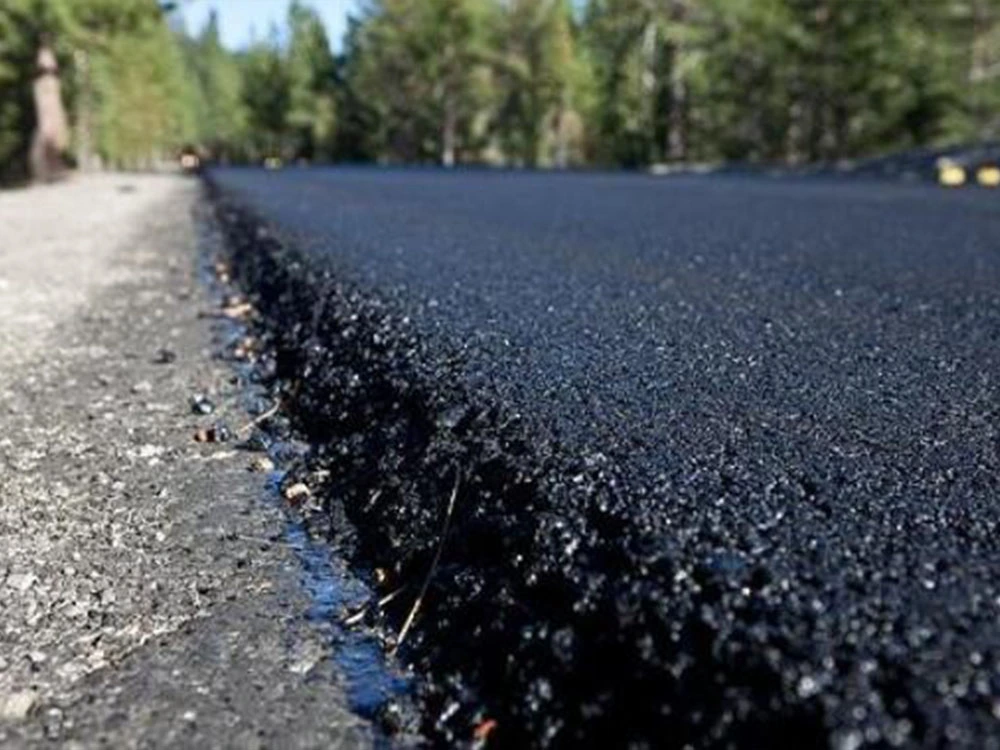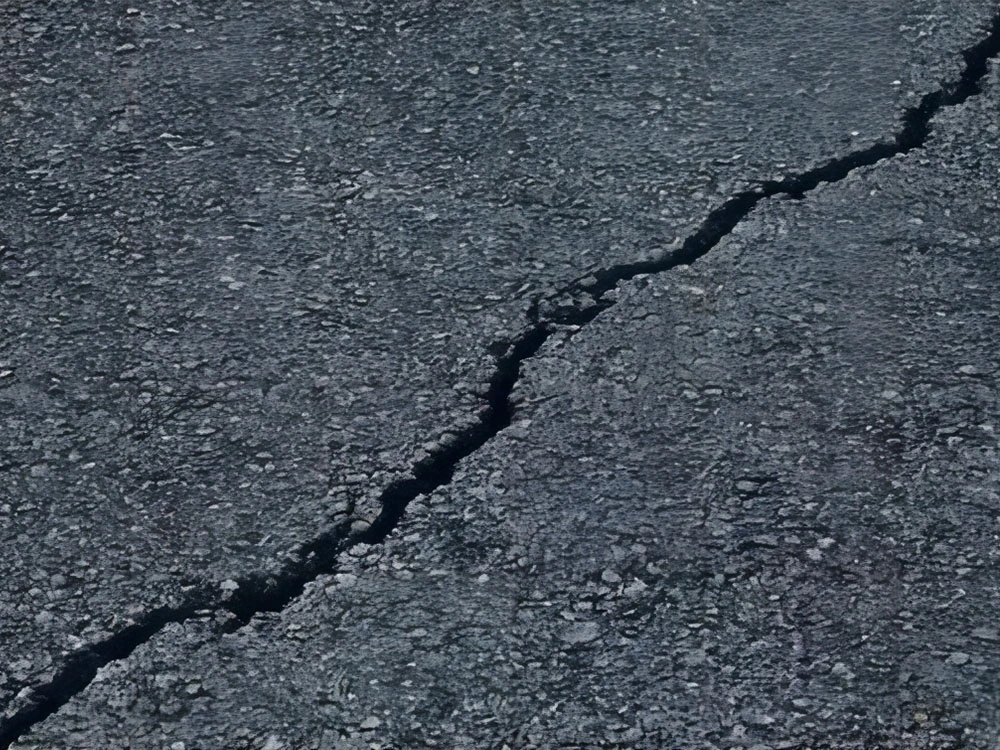Asphalt is a black and brown mixture of hydrocarbons and their non-metallic derivatives. The physical form is a highly viscous organic liquid with a black surface. Asphalt is in contact with air, and a series of physicochemical changes will occur. Such as evaporation, dehydrogenation, oxidation, and condensation. Now, the physical properties of asphalt are gradually hardened and become brittle. The hardened asphalt is very easy to crack and break, and can not continue to play the role of bonding, sealing, and so on. This irreversible change by the external environment is called aging.

Asphalt is now widely used in road projects. Caused by asphalt deterioration, aging of the main reason is oxygen, heat, and the length of aging time. Water and ultraviolet light is also an important factor causing asphalt aging. The aging of asphalt is divided into thermal and oxygen aging, light aging, and water aging.
Asphalt Different Aging Stages
The first stage is the transportation and storage links after production. The stage of asphalt and air contact area is very small, and thermal and oxygen aging is light.
The second stage is the mixing of asphalt total paving, and rolling process. The temp of mixing asphalt reaches about 170°C, which produces a serious thermo-oxidative aging reaction. This process is the main stage of thermo-oxidative aging.
The third stage is after the completion of asphalt pavement paving. Pavement aging reaction occurs under the influence of temperature change and ultraviolet radiation. This is also the main process of aging.
Light aging of asphalt
UV wavelength of 290-400nm will destroy the structure of asphalt and the formation of free radicals. Ultraviolet light will make asphalt molecules condensation and cause dehydrogenation reactions. Thus, the process converts part of the aroma into gum and part of the gum into asphaltene. Eventually, the asphaltene increases significantly, and the aged asphalt becomes brittle and hard. The road surface’s low-temperature crack resistance and fatigue durability decrease. UV irradiation intensity, irradiation time, and asphalt film thickness will affect the asphalt light aging. UV irradiation intensity is the most important factor in the rate of light aging. The rate of asphalt light aging with the increase of ultraviolet irradiation intensity and speed up. Asphalt, after mixing, wrapped in the total on the asphalt film, is very thin. Under UV irradiation, the thinner the asphalt film, the more prone it is to aging and the more serious it is.
Light aging on the physical properties of asphalt, the impact of chemical structure
Light aging and thermal oxidative aging of asphalt aging performance are different. Thermal oxidative aging of asphalt performance is not as bad as light aging. Asphalt in the light aging rheological properties will change. Asphalt viscosity increases, temperature-sensitive properties are reduced. Light aging increases the asphalt complex shear modulus and reduces the phase angle. This results in increased bitumen strength and softening point and, a decrease in penetration and ductility. Asphalt becomes hard and brittle easy to crack, and adheres poorly to the total. The asphalt is easily separated from the total surface when it encounters water. This will lead to asphalt in the pavement potholes, cracking, and other phenomena.

What are the asphalt aging test standards
Accelerated weathering tests on asphalt can help evaluate its durability and performance performance. The following is a common accelerated weathering test method:
ASTM D6521 – Standard Test Method for Evaluating the Aging Properties of Asphalt
AASHTO T240 – Standard Test Method for Evaluating the Aging Properties of Asphalt
EN 12697-40 – European Standard Test Method for Asphalt Aging Properties
BS EN 14769 – British Standard Test Method for the Evaluation of the Aging Properties of Asphalt
ASTM D4799 -Standard for Conditions and Procedures for Accelerated Aging Tests of Asphalt. Fluorescent ultraviolet and condensation methods may be used.
EN 1297-Flexible sheeting for waterproofing, Bituminous, plastic, and rubber sheeting for roofing. Artificial Aging by Exposure to UV Radiation, High Temperature, and Water.
ASTM D4799 and EN 1297 are used for UV aging and condensation exposure testing of waterproofing materials. But ASTM D4799 refers to ASTM G151 and G154. EN 1297 references ISO 4892-1 and ISO 4892-3.
These standard test methods typically cover different aspects of asphalt aging properties. For example, softening point, viscosity, elastic recovery, etc. Depending on the needs, selected standards to evaluate the aging properties of asphalt.
Test materials and methods
Test Materials
Preparation of Asphalt Samples:
Select representative asphalt samples and ensure that they meet the test requirements.
UV Aging Test Design
Aging Test Process
Carry out thin-film oven aging (TFOT) on the specimen first, and then carry out UV aging on the aging residue. These post-test changes in the UV-aging residue need to be measured. Such as pinpoint, 25 ℃ softening point, 5 ℃ ductility, and 135 ℃ viscosity.
Aging Parameter Setting
UV aging simulates the UV radiation of the pavement in the actual environment. But, there are many factors affecting UV aging. We need to control the aging device parameters to be closer to the field UV aging environment. Tests using UV aging chamber for simulation of polymer aging.
You can use this UV chamber as a simulator for accelerating asphalt UV aging. The UV aging tester consists of UV light and, a temperature control system. Setting up the light source radiates 365 nm of ultraviolet light. The aging chamber controls the temperature at about 60℃. This is more consistent with the summer working temperature of the asphalt road surface. Asphalt for the TFOT aging treatment of the sample, the thickness of control in the 1.5mm.
The aging time affects the accuracy between the test results and the real situation. Thus, there is equal conversion of outdoor UV radiation to indoor UV radiation time. After conversion, 160h is selected for the indoor accelerated aging test. 160h is equal to half a year of outdoor aging time.
Test results analysis
The surface of the asphalt after UV aging showed different degrees of cracks and folds. This is the asphalt in the aging process that occurs in carbonization. Needle penetration, softening point, and ductility can effectively evaluate the basic properties of asphalt. Thus, it is necessary to examine the changes in the indicators after UV aging.
Needle penetration can effectively characterize the consistency and softness of asphalt. The softer the asphalt, the smaller the consistency, the needle penetration is larger. The smaller the needle penetration, the higher the consistency, and the harder the asphalt.
The softening point index can reflect the high-temperature resistance of asphalt. A higher softening point means that the asphalt can withstand higher temperatures. The softening point generally increases after aging. This means that aging improves the high-temperature performance of asphalt. This is because aging increases the amount of macromolecules in the bitumen. The increase in macromolecules causes the softening point and the viscosity to increase.
The adhesion and toughness of asphalt and the ductility index are related. The greater influence on the asphalt ductility is the gum and aromatic components. The reduction of gum and aromatic components affects the ductility of asphalt. The higher the concentration, the greater the viscosity, and the more serious the aging. Thus, it is necessary to study the change in asphalt viscosity before and after aging.
Summarize
How to improve the service life of asphalt pavements has always troubled researchers. Besides optimizing the design of the mix ratio and standardizing the construction process. The improvement of the durability of asphalt material itself is also a necessary means. It is also necessary to improve the durability of the asphalt material itself.
As a temperature-sensitive material, asphalt is susceptible to aging from production to service. Production and the paving process in high temperatures and with oxygen will cause thermal aging. Asphalt is aging by vehicle loading, ultraviolet light, temperature, and water in service. Asphalt aging is a chemical reaction process of fracture reorganization and polymerization. This process inevitably leads to changes in the properties of asphalt. Asphalt becomes harder and more brittle as it ages, affecting its performance. As aging increases, it leads to the development of temperature shrinkage cracks. Under the influence of water, the asphalt surface peels and potholes. This restricts the service life of the pavement. UV light acts as an important predisposing factor for asphalt aging. Studying the performance changes of used road asphalt after UV aging is necessary.
For more environmental test chamber, Please visit: https://chiuventionclimatechamber.com
For more environmental test simulation programmes,environmental testing knowledge, instrument knowledge, and environmental testing laboratory knowledge, please contact us: [email protected]
